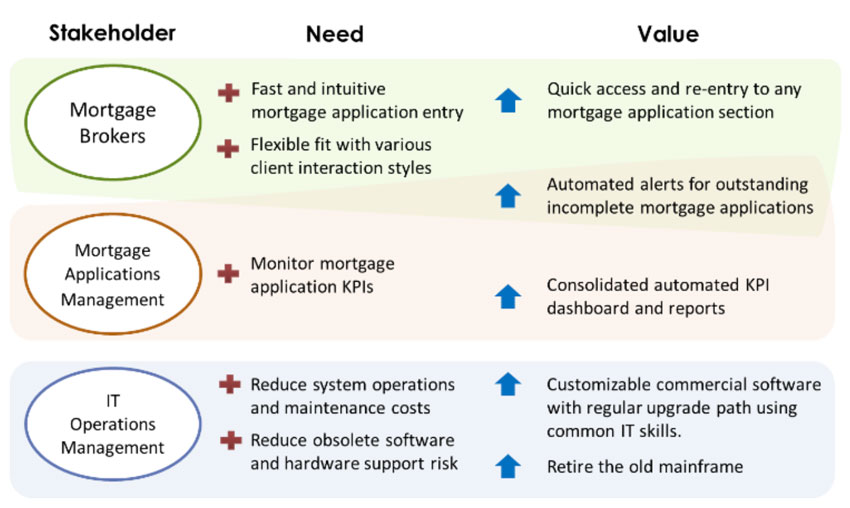How successfully does your organization implement strategic initiatives?
A recent study by the Economist Intelligence Unit revealed that only 56 percent of strategic initiatives meet the original goals and business intent. Advances in digital technology will continue to enable all kinds of new products and services and inspire innovative strategies, but will your organization be able to successfully implement those strategies?
By: Louise A Harris CMC | Louise.Harris@stos.ca
Successful implementation of strategic business change has been receiving increasing focus in business management publications over the past decade. The pace of change is increasing and organizations cannot afford significant time and effort lost to failed strategic initiatives. Organizations need a coherent approach to strategy implementation that:
- facilitates clear articulation of stakeholder value;
- provides direct relation of strategic goals to stakeholder value; and
- enables direct traceability of all projects and business change activities to strategic goals.
Purpose : Stakeholder Value
The purpose of the initiative must be relevant to all key stakeholders. It must be very clearly articulated and understood by everyone involved. Ambiguous communication of the initiative purpose will result in stakeholders having conflicting, or out of scope, expectations and potentially a lack of interest and engagement. This will cause stakeholder adoption apathy or even resistance that undermines the achievement of optimal business benefits.
The initiative purpose has two components:
- The value to the organization
- The value to the key stakeholders
The value to the organization is generally well stated for most business initiatives – decrease cost, increase revenue, reduce risk, etc. However the value to the key stakeholders is often vaguely defined or not explicitly communicated at all. This is the most significant cause of inappropriate or just plain wrong business solution design. A large national mortgage brokering agency wanted to modernize their mortgage application system used by their brokers. This would reduce maintenance and operating costs for the agency and they assumed a modern tool would be easier to use than the existing mainframe and paper based system.
They executed what they thought was a successful initiative. The new system was well designed technically, it supported the documented standard process flow and the project was on schedule and budget. They had some issues during user acceptance testing but put it down to lack of user training as all the functionality worked. A friend of mine was a broker with that agency and was looking forward to the new system that was supposed to be “much better” than the old one. The day came when the new system went live and she logged on with anticipation. It certainly looked a lot nicer but what a disappointment it took three times as long to enter a mortgage application. Her income depended on the number of mortgages she successfully processed and even after several weeks the new system was still taking twice as long as before.
The problem here was twofold.
- “Much better” had not been clearly defined in terms of benefit to the mortgage brokers. The strategic goal of “reduce IT costs” had no value to the mortgage brokers.
- The documented standard process and the mortgage application form layout didn’t reflect the actual workflow of the brokers.
- measurable in some form
- base lined prior to implementing the initiative
- defined with an ideal target and also interim targets where applicable
- Identify the level of change required for each of these resources for each stakeholder value proposition and
- Determine how much of this change will be addressed in this initiative.
- Clear and concise definition and communication of key stakeholder value, expected results of the initiative and the scope of both the final solution and the activities to design the solution.
- Traceability from stakeholder value to expected initiative results to scope requirements, scope of design activities, and scope of actual implementation.
There was an intent to make life better for the mortgage brokers but because there was no clear articulation of value to this stakeholder group there was no focused analysis on the necessary solution requirements to deliver that value.
Taking an EA approach to modelling stakeholders and value, with traceability to solution results down through business requirements to design features and finally to test cases mitigates the risk of such design flaws. It will also identify areas of common value across stakeholders.

Figure 1- Stakeholder Needs Value Map
The diagram shown in Figure 1 represents a subset of a stakeholder needs value model. It facilitates focus on the needs of the various impacted stakeholders in addition to the goals of the organization. Where the customer/client is directly impacted by the initiative it is critical that they are also included in the model.
These stakeholder value statements will serve as the plumb line throughout the execution of the initiative. Design decisions and scope changes can all be evaluated against these value statements in an objective and coherent manner.
Result : Measurable Business Outcomes
The result of the initiative must be defined in terms of measurable business outcomes that reflect the achievement of the various stakeholder value propositions. Those outcomes relevant to solution users should be traceable to and demonstrated in user acceptance testing. Each one of these outcomes needs to be
Where the ideal target will not be achieved immediately after implementation, having interim targets will give early indication if an adjustment to the solution is needed. These measurable outcomes will also serve to further clarify stakeholder expectations and provide guidance to solution design.
Scope : Boundaries and Dependencies
The scope of an initiative generally involves the provision of resources needed to address the gap between the business outcome baseline and the desired target. These resources fall into seven categories
Scope can be clearly defined in two steps.
This will further clarify stakeholder expectations of benefits and impacts. It will also give context to determining the level of engagement they need to have. Changes that are required but not initially envisioned to be within the initiative scope will also be evident at this point. Where these required changes are part of other projects, a plan can be put in place to manage these external dependencies. Changes not currently in scope of any project can now be included in scope of this initiative or added to other projects. Establishing traceability of resources to initiative scope will uncover resource gaps that often get missed, such as the need to update policy or generate information that is missing or corrupt.
This model is also very useful for identifying potential resource conflicts between initiatives before they occur. In addition it can be used to identify external forces that may impact resources undergoing change and thus enable early development of a risk mitigation plan.
Summary
Two keys for successful implementation of strategic initiatives are
All articles are © 2015 by the authors.
The views and opinions expressed by our authors are those of our authors and do not necessarily reflect the official policy or position of IRM UK.
This article was featured in IRM UK’s Monthly E-newsletter. To subscribe please visit http://www.irmuk.co.uk/usefulinfo/enewsletter.cfm. Please note we are always on the look-out for new contributors so if you have an article you would like published please forward it to jeremy.hall@irmuk.co.uk for consideration.
IRM UK Strategic IT Training Ltd. 2nd Floor, Monument House, 215 Marsh Road, Pinner, Middlesex, HA5 5NE, Tel: +44 (0)20 8866 8366 E-Mail: customerservice@irmuk.co.uk Web: http://www.irmuk.co.uk


